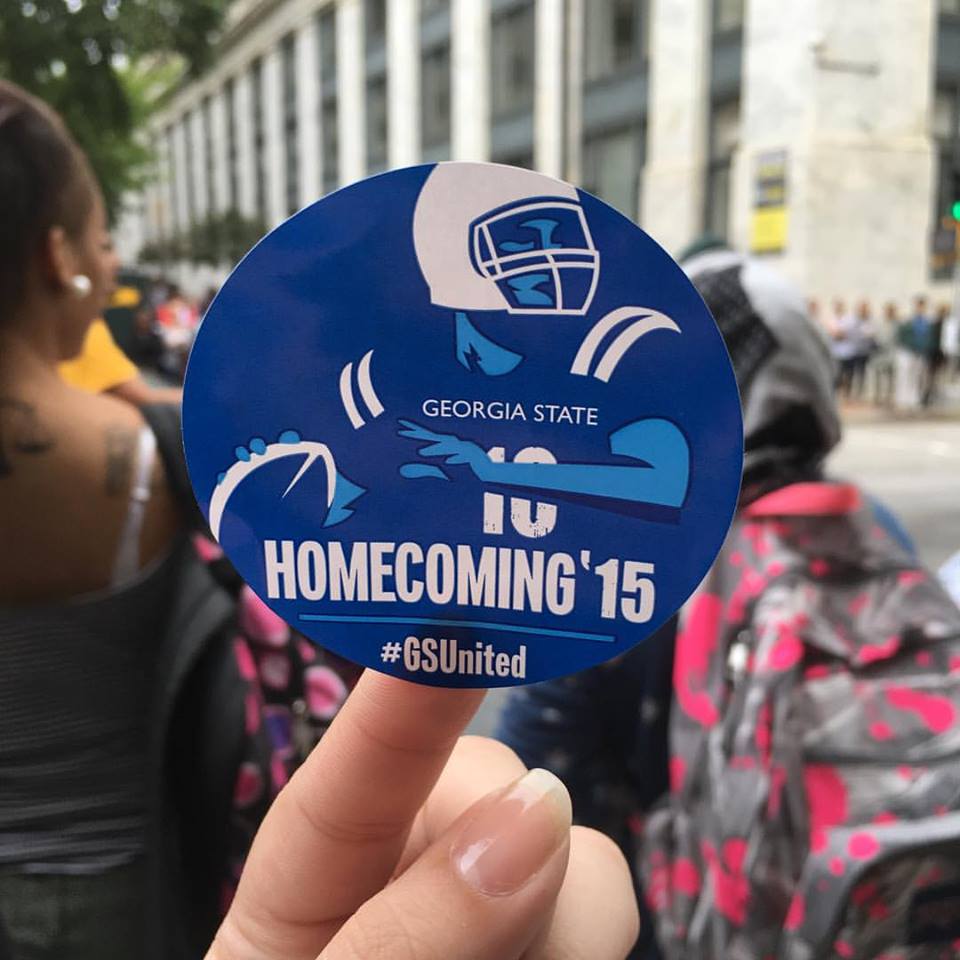
Homecoming is an American tradition. It’s tailor-made for the social customs of high schools and universities all over this country, and being so, it reflects the values of the cultures therein.
It’s named for the coming-home (so to speak) of the alumni of whichever institution is hosting it. As such, they become the center of attention of that celebration.
It’s important for such an event that there is a certain amount of school spirit and nostalgia for the “good old days” that the alumni can reflect upon while waving and smiling from their floats in the parade, or slicing cake during the banquet.
The ideal sort of college for a Homecoming is one that has a home-like vibe to it, and therefore a homecoming ceremony is more germane to smaller institutions with isolated campuses and a strong sense of community.
This is why Georgia State’s Homecoming has some obstacles. On one hand, it is a good idea to uphold the tradition, especially for a college with such longevity. While on the other hand, it seems like a homecoming ceremony would be somewhat unwieldy because of Georgia State’s location.
But Georgia State isn’t low on school spirit, and they even supplied Homecoming with a “Panther Pack,” which is like a grab bag full of a few things you need for a party: pom poms and t-shirts.
The Panther Packs are just one example of the way Georgia State geared up their school spirit for Homecoming, and just one of the many events that happened around the same time.
From Sept. 28 to Oct. 2, there was a door judging competition, a block party, a royal ball, a golf cart parade, an alumni social, and a canned food drive collection. That is in addition to the football game, and community events.
That there are so many events in one homecoming week show that a lot of thought has been put into the week, and that it’s being used for more than just pomp and circumstance to glorify the alumni.
Such a formulation of a large-scale event is extremely innovative and rare, and it’s refreshing to see different causes included in such a widely-regarded tradition.
You’ve probably guessed, this article is basically a big shill for everything “GSU Homecoming,” simply because I can’t find anything to criticize like I have in other articles.
Nothing, that is, besides Atlanta itself. Atlanta’s a huge city, and being so, it causes a lot of problems when it comes to Georgia State’s status as a university.
I don’t need to go over the difficulties of going to a commuter school; we all know that it’s a struggle. But when it comes to celebrating Homecoming, commuting is a big handicap.
And Panther Packs are a good example of the ways people worked around this handicap. Can’t make it to the main events? Celebrate by yourself at home, and while you’re at it, post pictures of your party to Instagram with the homecoming hashtag. It was a partially-digital celebration.
What a great idea. It’s inclusive, innovative, simple, and it works because people are attached to their Instagram accounts anyway.
As for the parade, it was held on Oct. 1, and traced a big circuit around campus, which surely ran the risk of congesting traffic.
But despite this, it was still a bold display of school spirit. It probably annoyed drivers, but not as many people as were witness to the floats and perhaps learned something about the more distinguished alumni.
These difficulties, and others, got in the way of Georgia State pulling off their events as smoothly as they would have hoped.
But let’s imagine for a moment a Georgia State without a homecoming ceremony of any kind. This is where I get really speculative.
Imagine that Homecoming week was just like any other week: under-slept students trundling listlessly from class to class, hating their lives and fearing their grades and futures, with nothing to look forward to but Thanksgiving break, if even that.
Imagine the opportunity passing by for some sort of context—some sort of meshing together of the entire student body into a cohesive identity—and students never really get a sense of Georgia State as a gestalt, and that they never get the chance to meet people they otherwise wouldn’t.
Imagine that there is no canned food drive and no blood drive, that there isn’t a reason for these philanthropic activities to get underway.
Imagine a middle-aged couple showing their friends their photo album from their youth, and the friends ask “Who was homecoming King and Queen?” and the couple says: “Yeah, our school didn’t have that.”
Imagine, finally, that alumni felt no sense of welcome at their alma mater, that the only contact they get from the school is an invitation to give donations, and otherwise nothing? They might watch their children or their children’s children attend, but there will be no sense of a bridged gap between generations.
They would feel that it was once their school, and now it is their children’s. No history, just an institution fulfilling a necessity.
Their kids will attend and get their degrees, never to return. Never to come home. That’s why Homecoming is important as an event, and that’s why school spirit is important as a symbol. It is not some kind of vacuous anthem to be cheered and eventually forgotten about. It’s a memory in the making, an invitation, and most importantly a bridge between classes, ages and personal experience.
